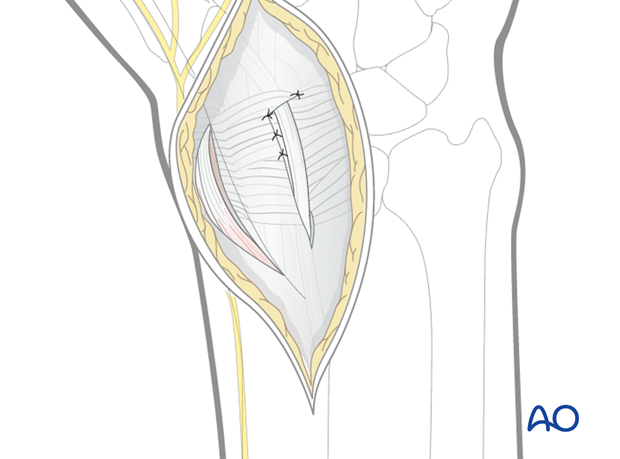Dorsal approach to the distal forearm
1. Preliminary remark
Dorsal approaches (as illustrated A-D) can be chosen between the different extensor compartments (as illustrated I-VI), as dictated by the specific fracture pattern. In this module the dorsal approach through the third extensor compartment (B) is described in detail.
Combined approaches may be used through a single skin incision.

2. Skin incision
The intermediate and the radial columns may be approached separately using a single dorsal skin incision.
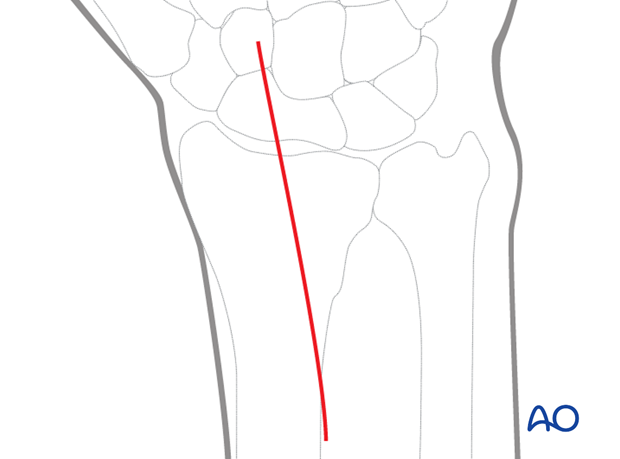
3. Approach to the intermediate column
Incision of retinaculum
The third compartment is opened in line with the EPL tendon in the extensor retinaculum.
When opening the tendon sheath, be careful not to cut the tendon.
The incision is extended proximally in line with the EPL tendon.
Distally, open the extensor retinaculum as far as needed. It is recommended to preserve the distal part, so the tendon still glides towards the thumb.
Alternatively, the sheath may be opened distally, and the tendon elevated and retracted radially.
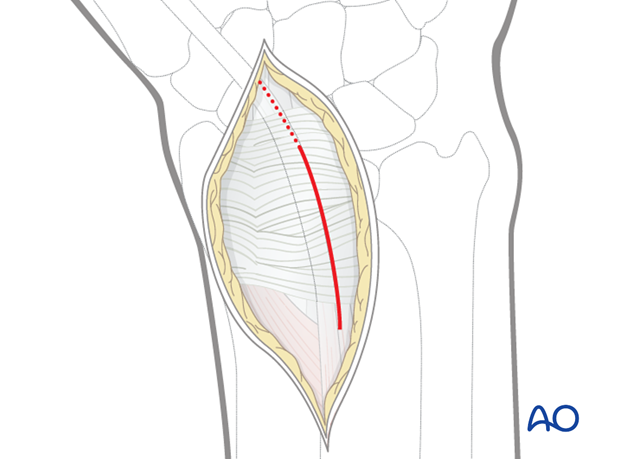
Mobilization of extensor pollicis longus tendon
The extensor pollicis longus tendon is freed and a vessel loop is passed around it.
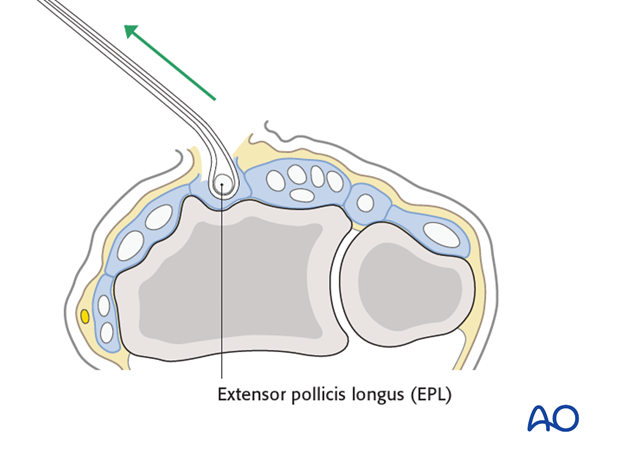
Subperiosteal elevation of 4th compartment
The fourth compartment is elevated subperiosteally, leaving the compartment itself intact. The intermediate column is now exposed.
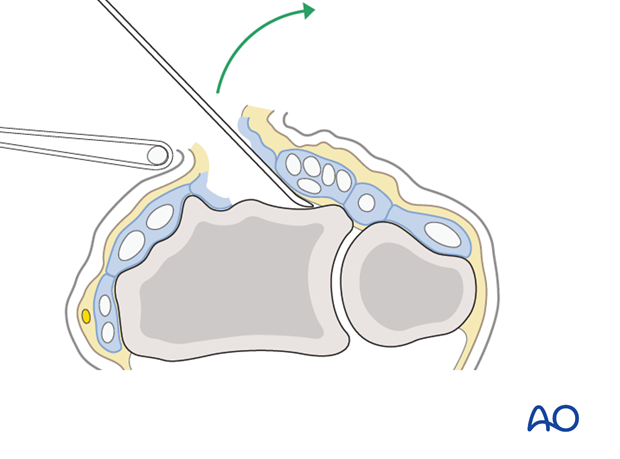
4. Arthrotomy (optional)
To expose the distal articular surface, for example in die punch injuries or associated carpal injuries, the capsule is incised in the line of the distal radial articular surface as much as needed to identify and deal with the articular injury.
One mm of the capsule should be left on the distal radius for reattachment.
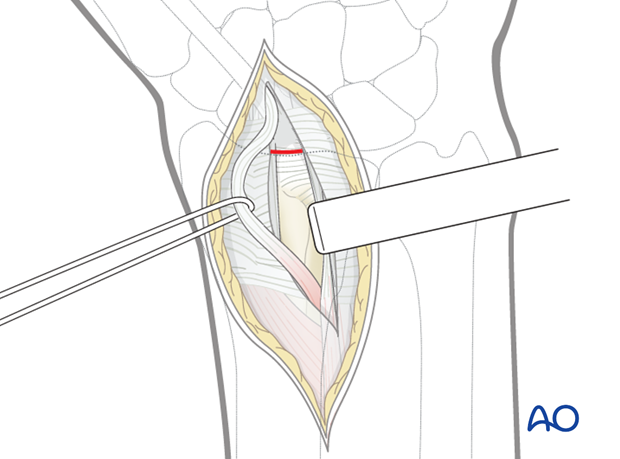
5. Approaches to the radial column
Depending on the fracture configuration, further retinacular incisions may be required to deal with the radial column fracture. Either of the following options may be chosen.
Option 1: Extraarticular approach to the radial column using a separate retinacular incision between the first and second compartment. This is used in extraarticular and simple articular fractures.
Option 2: Approach to radial column through the same retinacular incision as described above and developed under the second extensor compartment. This gives better access for intraarticular fractures of the scaphoid facet.
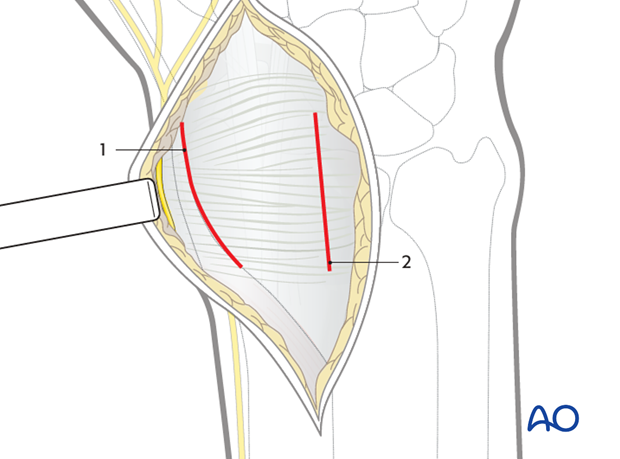
Option 1: Extraarticular dorsal approach to the radial column between extensor compartments I & II
This approach allows plate positioning on the radial side of the radial column, when it is not necessary to expose the articular surface.
The radial column is approached with subcutaneous dissection towards the radial side.
As a first step, identify the sensory branch of the radial nerve, which lies in the subcutaneous flap above the first compartment and must be protected.
If it is difficult to obtain satisfactory reduction of a radial styloid fracture, it may be helpful to release the brachioradialis tendon.
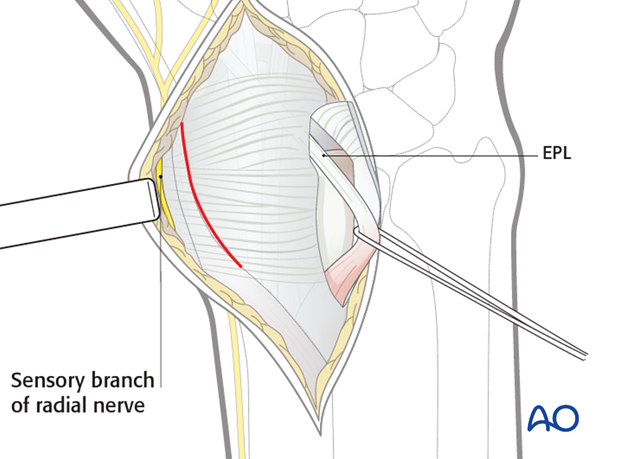
Incision through 1st compartment
The 1st compartment is incised at the level of the musculo-tendinous transition and is released up to the tip of the radial styloid.
The tendons of the first extensor compartment are released and mobilized.
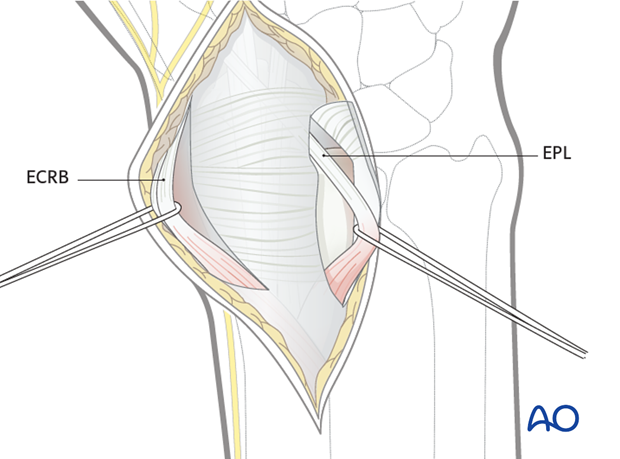
Subperiosteal elevation of 2nd compartment
The second compartment is elevated subperiosteally, leaving the compartment itself intact.
The radial styloid is now exposed.
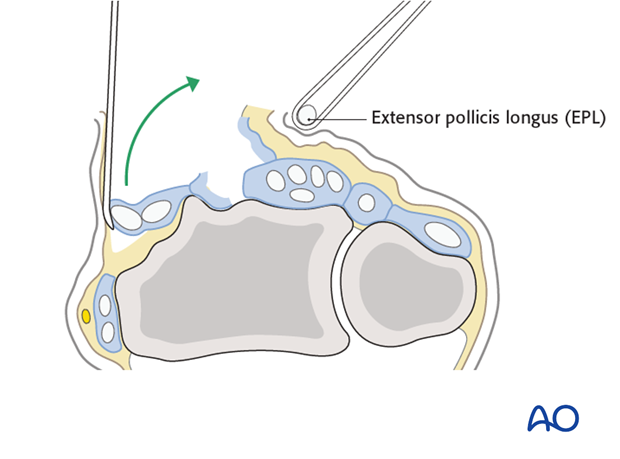
Option 2: Approach to radial column under the second extensor compartment
Lister's tubercle is identified on the radial side and the second compartment is partially elevated.
The EPL tendon can be retracted to the ulnar side.

The second compartment and its contents are elevated from the distal radius by sharp dissection.
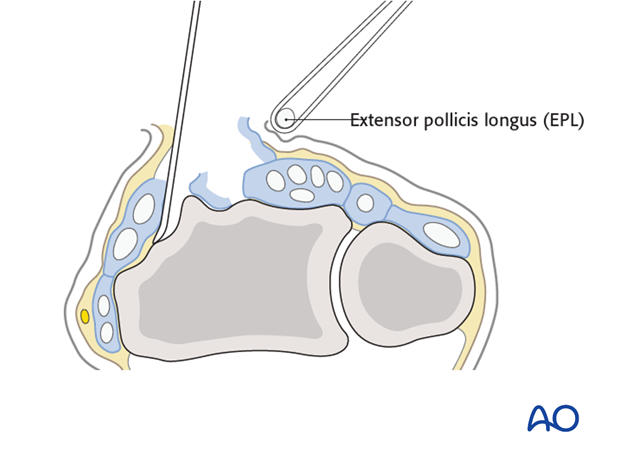
The tendon of the Extensor Carpal Radialis Brevis (ECRB) is retracted from the floor of the compartment.
This allows access to the radiocarpal articular surface on the radial column.
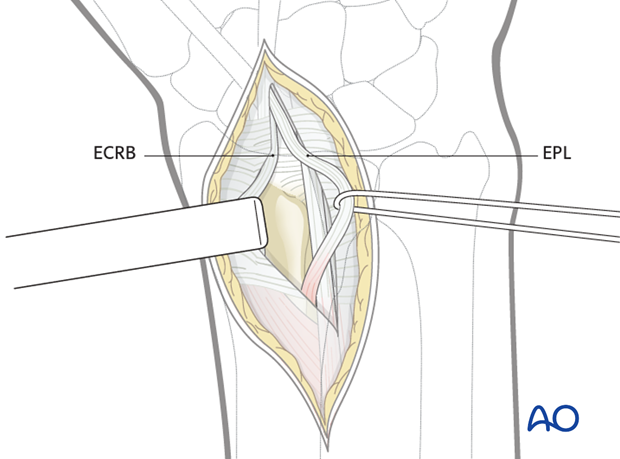
Once the compartments have been elevated and the distal radius exposed, the capsule may be opened to expose the articular surfaces.
A plate may be applied to the radial column through this approach.
The EPL tendon may be retracted in either direction, as dictated by the fracture configuration.
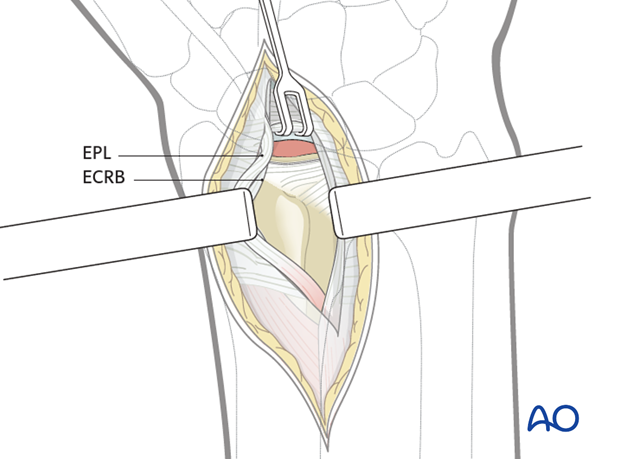
The capsular incision should be big enough to see the lunate facet and a part of the scaphoid facet in case of distal radial articular compression or carpal bone injuries.
6. Wound closure
The second and fourth compartment are sutured back underneath the EPL tendon without any tension.
The distal part of the tendon sheath is left intact, so the tendon still lies in its anatomical position.
The first and second compartments are not closed.
If the brachioradialis tendon has been released it does not need to be reattached.
If a plate has been applied with the EPL lying over it, the V-shaped retinacular flap should be drawn underneath the EPL tendon to prevent contact with the plate. Leaving the EPL tendon in a subcutaneous position is also acceptable.
The skin is then closed.
